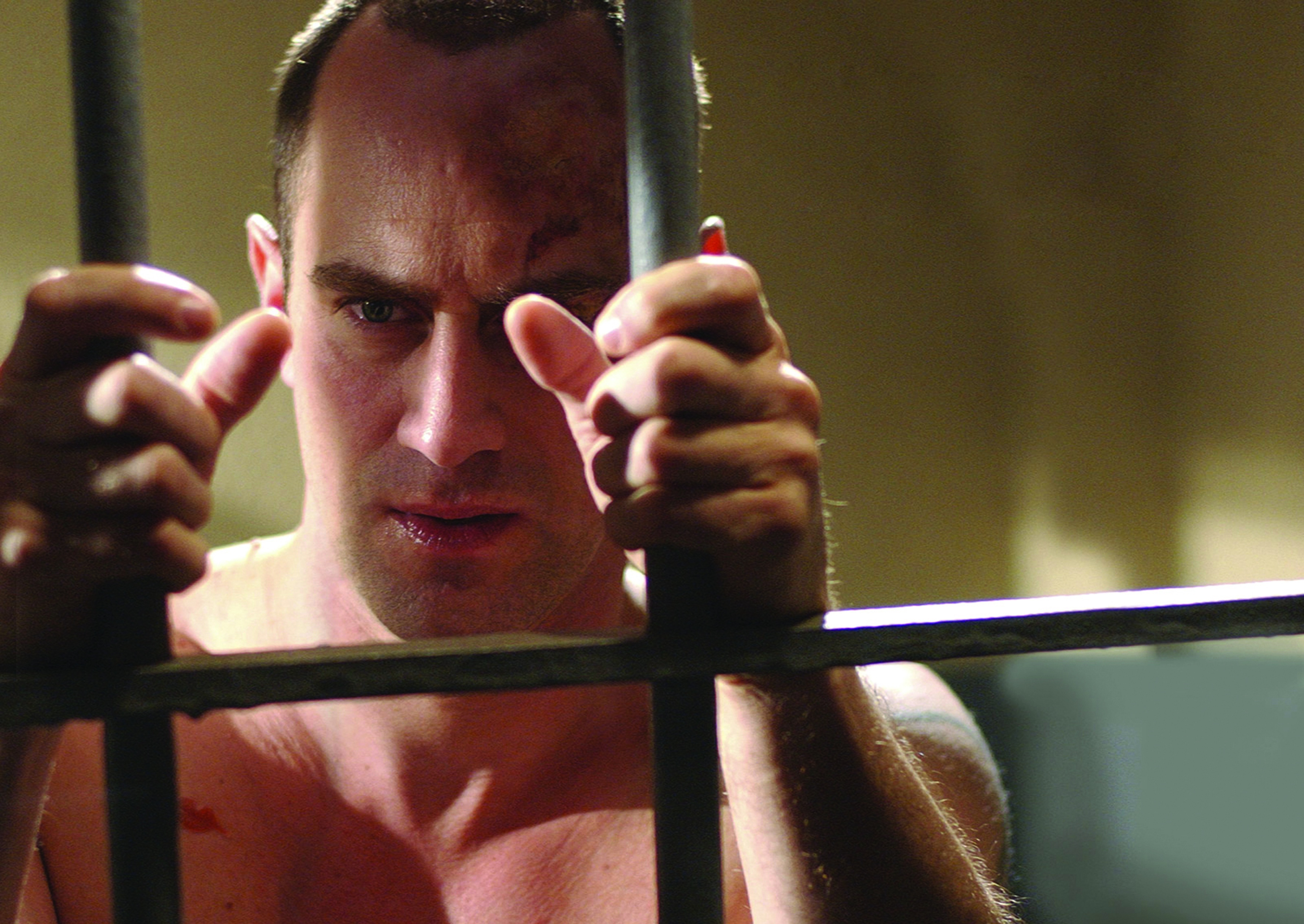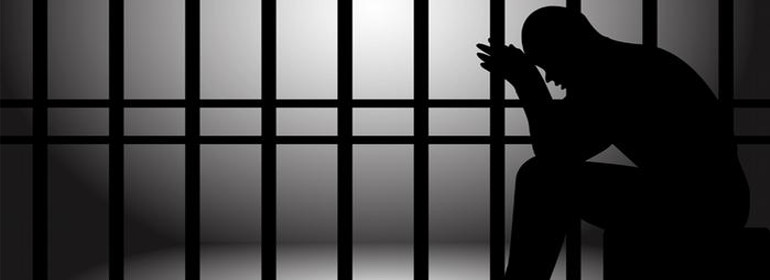From this month’s GCN: It’s not all Orange is The New Black for lesbian, gay, bisexual and transgender prisoners in Ireland, as Nicola Carr reports.
Issues facing LGBT people in prison have been portrayed in TV programmes such as Orange is the New Black and Oz, but life for LGBT prisoners in Ireland is a somewhat different story, as research carried out on behalf of the Irish Penal Reform Trust has found. Out On The Inside explored the rights, needs and experiences of LGBT people in prison in Ireland.
Lesbian, gay and bisexual (LGB) people in prison are a doubly invisible population. Their needs are not generally recognised within LGB communities or within the prison system, and LGB prisoners describe themselves as feeling isolated. For gay and bisexual men in prison, silence is the safest option, as any difference, perceived or otherwise, makes you vulnerable to bullying. As one prisoner put it: “Being gay in prison is seen as a weakness, and people prey [on] that weakness, because it singles somebody out. And that makes them a target for verbal abuse and physical abuse and emotional abuse and psychological abuse, the whole lot, so that is the major challenge.”
Male prisons have been characterised as ‘hypermasculine’ environments, where certain ways of ‘being male’ such as an emphasis on physical strength and aggression are privileged. Reports from the Inspector of Prisons show that bullying occurs in prisons and is exacerbated by conditions of overcrowding. In Ireland just over half of prisoners are placed in single cell accommodation and 37 percent have to use a toilet in the presence of another prisoner. This raises particular concerns for gay prisoners.
“You don’t know what way your cellmate is going to react, you know?” says Derek, one of the report’s participants. “He might not want you in the cell, he might want you out, he might be afraid that you would come onto him or whatever, so there are issues there.”
Those subject to bullying may be reluctant to report it because of fears of repercussions, so silence pervades. Keeping your head down to avoid targeting and getting through your sentence is the main objective. For those serving long sentences this involves consciously masking aspects of identity, or as Rachel, a transgender woman puts it: “you keep your mouth shut and your head down”.
The fact that men in particular don’t feel safe enough to be open about their sexuality in prison, even if they wished to, contributes to a ‘cycle of invisibility’. This extends to access to aspectsof LGBT culture. Even getting a copy of GCN in prison involves making a special request, and by doing so there is a risk of being outed.
For lesbian and bisexual women the situation is a little different. The female prisoners that we spoke to did not describe the same degree of bullying or intimidation on the basis of their sexuality. Although in some cases an undercurrent of homophobia exists.
As Miriam describes it: “You can be open to a degree and of course a lot of women are inclined to make fun and jokes about your sexuality. I’m a lesbian, I get all fun and jokes, but when they’re in their cell and they’re on their own, you know, I’m sure like they would feel quite awkward… I do, I would feel quite awkward a lot of the time, and I’d have to man it up, brave it up, you know what I mean?”
Prison rules prohibit open displays of physical contact between prisoners. However, we know that same-sex behaviour occurs in prisons. The Irish Prison Service has recently introduced a condom-use policy in male prisons in recognition of this.
However, the current process for accessing condoms involves making a request to medical staff, meaning that prisoners have to again navigate the risk of being outed. While it is welcome that there has been some recognition of the health needs of male prisoners, the efficacy this approach has to be questioned.

According to Peter, a focus group participant for the report, “there is still not enough confidentiality around access to condoms, because there is still a stigma attached to accessing them.” Meanwhile a gap exists for women prisoners. There are no such initiatives focusing on their sexual health needs and the research notes that this is an area that needs to be addressed.
While LGB prisoners are largely invisible in the Irish Prison population, a paradoxical situation exists for transgender prisoners, who may experience ‘hypervisibility’ in prison environments, which are strictly delineated along gender boundaries. Currently there is no policy in place in the Irish Prison Service regarding the placement and care of transgender prisoners.
The need to develop policies regarding transgender prisoners is highlighted by the recent tragic deaths of two female transgender prisoners in England, who were both accommodated in male prisons. The present situation in Ireland is that a prisoner is placed in custody based on a court order (warrant).
A warrant is issued based on a person’s birth certificate and the prison authorities do not have discretion to change this. This means that for example, a person who lives and identifies as a female but who has a birth certificate as a male will be placed in a male prison. This is precisely what happened to Rachel. “I had to go into prison and unwork of eight years of living as female, and try and develop a male persona again,” she says, “to the point where I wasn’t going to be bullied.”
Often in instances where a prisoner is identified as ‘vulnerable’ they will be accommodated separately from the rest of the prison population. However, this is by no means a straightforward solution, as it can involve long periods spent alone with limited access to activities. In fact the use of such protective segregation has been subject to court appeals on the basis that it increases the pains of punishment by subjecting people to lengthy periods of isolation, albeit for their own protection.
The recent passage of the Gender Recognition Act adds a further impetus to address this area, as a person can now apply for a gender recognition certificate that allows legal recognition of their expressed gender. The research recommends that a policy be developed in this area that takes into account international best practice, which recognises the needs and expressed wishes of transgender prisoners regarding their placement.
More positively there are some signs of change. Prisons are not static institutions, totally removed from the outside world. It is more accurate to see prisons as microcosms of our society. The Irish Prison Service joined the GLEN Diversity Champions Programme and established the ‘Inside Out’ staff peer support group in June 2013. Prison staff reflected very positively on the establishment of a LGBT peer support group and its effect on wider culture. We conducted interviews for our research following the Marriage Referendum, and prisoners told us that within the prison there were some more open discussions about what this means for Irish society.
According to one of the interviewees, Eric: “We were sitting in the classrooms even with the teacher, and there’d be a full conversation. And it was the general consensus that it’s about time for it, we’re in the 21st century. They can sit around and talk about it, gay, lesbian, bisexual or whatever, and it’s not all negative whereas it would have been years ago.”
At the launch of this research report the Irish Prison Service committed to developing policies for LGBT prisoners. This is welcome, but as with any policy the true test will be in its implementation and an improvement in conditions for LGBT people in Irish prisons.
‘Out on the Inside – The Rights, Needs and Experiences of LGBT people in Prison’ was written by Dr Nicola Carr, Dr Siobhán McAlister and Dr Tanya Serisier. It’s available to download at www.iprt.ie
This article appears in May’s GCN. Read it here.
© 2016 GCN (Gay Community News). All rights reserved.
